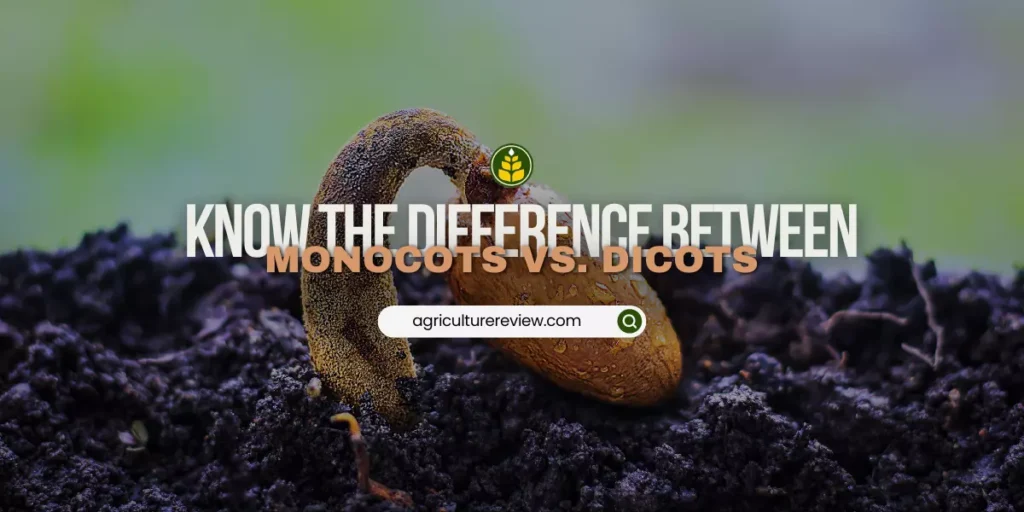Angiosperm which comprises a group of plants that produce flowers and bear their seeds in fruits is divided into two different groups that are monocots and dicots primarily based on the number of cotyledons that is part of the embryo within the seed of a plant. However, there are distinct features that are visible in plant parts of monocots and dicots which can help us to identify them easily.
Mononcots Versus Dicots

| Serial Number | Plant Parts | Monocots | Dicots |
|---|---|---|---|
| 1. | Cotyledons | One cotyledon is present in the seed. | Two cotyledons are present in the seed. |
| 2. | Roots | Monocots have fibrous root system. | Dicots have tap root system with lateral branches. |
| 3. | Leaf Veins | Leaves have parallel venation. | Leaves have reticulated venation. |
| 4. | Floral Organs | Flowers of monocots have flower parts in multiple of three or equal to three. | Flowers of dicots have flower parts in multiple of four or five or equal to four or five. |
| 5. | Pollen | Single pore pollen is present in monocots. | Three pores pollen or trisulcate is present in dicots. |
| 6. | Stem Vascularisation | In monocots, the vascular bundles are scattered. | In dicots, the vascular bundles form a ringed structure. |
| 7. | Examples | wheat, corn, grass, orchids, barley, garlic, etc. | beans, coffee, tomato, apple, pea, rose, etc. |
Hence, if you want to differentiate between monocots and dicots, then with the help of this table you can observe flowering plants and based on observations you can easily differentiate whether the plant is a monocot or dicot.
If you have any queries, ideas or suggestions, then please comment below. You can also connect with Agriculture Review on Facebook, Instagram, Koo and WhatsApp Messenger.




